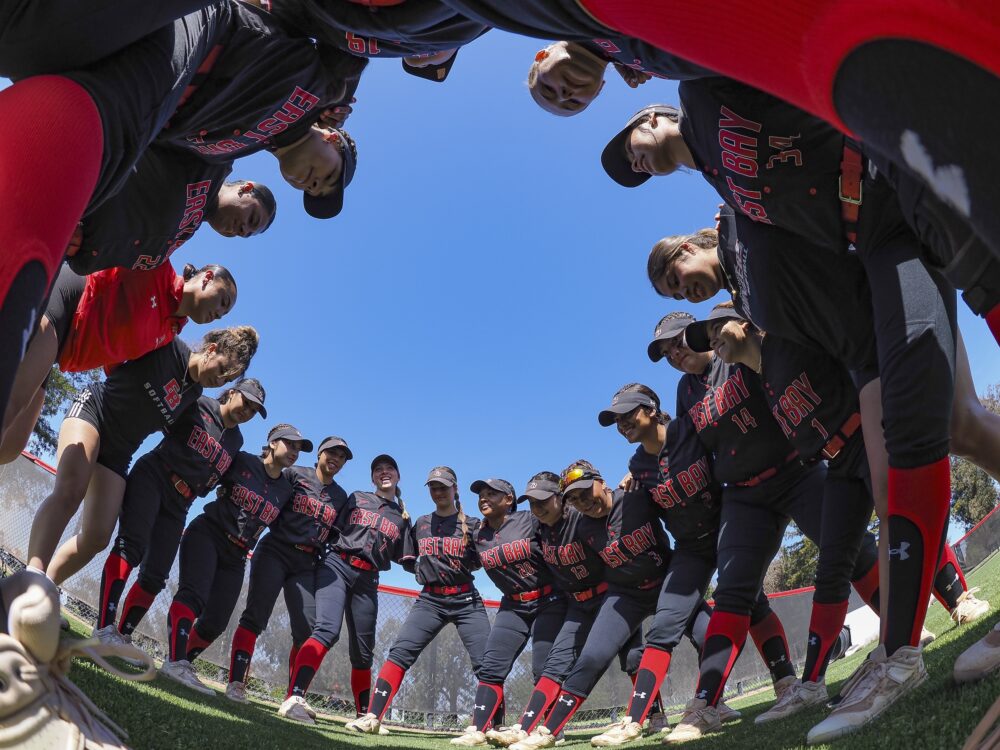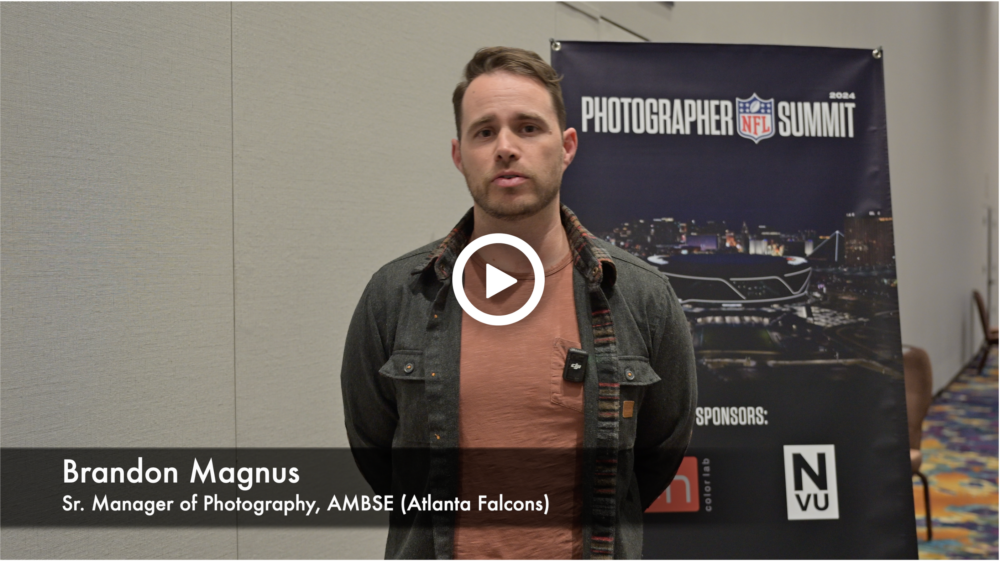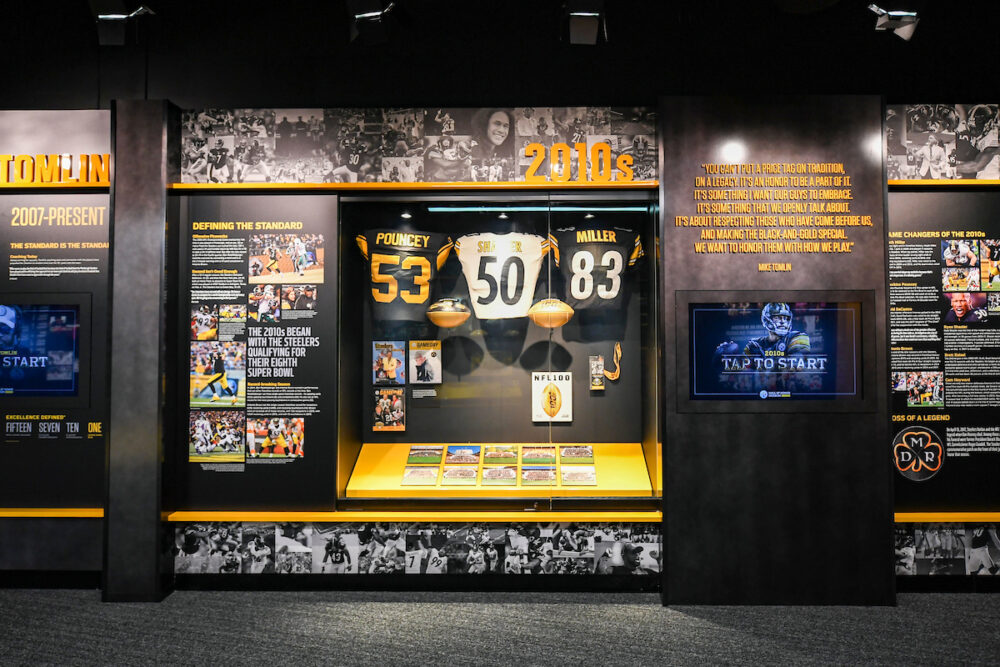Share
Transforming Your Live Event Photography Workflow
Match Hospitality creates impactful content with centralized asset hub.
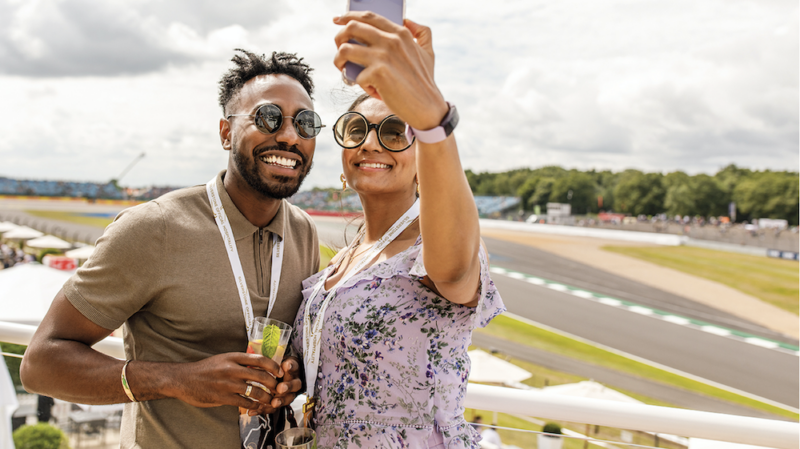
For any sports fan, nothing beats the exciting experience of watching your favourite sport live and in person. This experience is made even more memorable when you’re able to share it with others. Add some extra elements like music and gourmet food and you have something special – a unique sports experience.This type of experience is at the centre of MATCH Hospitality’s mission. The company is the global industry leader in the development, sales management and production of official commercial hospitality programmes for major sporting events. These include the British Grand Prix and the FIFA World Cup™, which is their largest operation.MATCH Hospitality’s expertise and vision make it head and shoulders above other hospitality companies. The founders have been involved in every FIFA World Cup™ since the ’86 World Cup in Mexico. The team’s extensive knowledge of the sports events industry has made the company the trusted authority in its field.
Promoting The Experience Economy Through Visual Storytelling
To create, promote and sell these special sports experiences, MATCH Hospitality uses powerful visual storytelling as part of its marketing strategy. They commission a team of photographers to capture special moments at these major events, creating impactful images that tell a story and connect with their audiences. They then use these in their promotional campaigns across different marketing channels.
At The PhotoShelter Summit: UK/EU Edition we were delighted to speak to Morag Kent, Marketing Lead UK at MATCH Hospitality, where she shared how her team uses PhotoShelter to power their creative workflow.
“We really are in an experience economy now. People after the pandemic want to spend their money on experiences, have something to look back on, and have something to share on social media. So, for us, it’s key to tell the product story, whichever tier of hospitality the customer is in, by capturing the moment.”
Morag kent, Marketing Lead UK at MATCH Hospitality
The Challenge
Time is of the essence when you have to capture a major sport event like the FIFA World Cup™, with multiple sites and matches taking place over 4 weeks, or the Formula 1 British Grand Prix with qualifying sessions and races over 3 days.
In addition to time constraints, each event has a different brand style which requires particular types of photos for promotional campaigns. For this, MATCH Hospitality asks their team of photographers to consider these key elements:
- Location – which part of the stadium needs to be photographed?
- Hospitality tier – what type of hospitality package is being promoted; entry-level, luxurious? What type of food is served?
- Style – what kind of visual vibe is at the event; festival style, al fresco?
- Output – How are the photos going to be used, i.e for the website, social media, brochures or case studies?
Their photography team also needs to ensure they’re capturing images that are timeless. This is because these types of images can then be used for promoting future events. To make sure they do this when managing photoshoots, they’re asked to consider the following:
- Photos for future events – They need to avoid time-specific details as much as possible. Fan photography for future events also needs to ensure all teams, nations, and types of fans are included.
It’s all about capturing moments more than settings and details, especially for the FIFA World Cup.
- The scale of the event – Due to the scale of these events, there’s a lot of time pressure when coordinating multiple photoshoots across different sites. The team needs speed and simplicity.
At the FIFA World Cup™, for example, there were 64 matches over 4 weeks, with 4 photographers allocated to capture the event.
On the other hand, at the British Grand Prix, they had multiple practice and qualifying sessions with races over 3 days, and 3 photographers.
- Geographical spread – There’s also the geographical location of the sites where these events are held.
At the FIFA World Cup™ in Qatar, there were 8 stadiums with a total distance of 75km from the most northernly stadium to the most southernly one, all of which the photographers had to capture (see picture below).
For the Formula 1 British Grand Prix at Silverstone, the circuit is 5.79 km long. So each photographer is allocated to a specific MATCH Hospitality area to save them from walking all that distance.
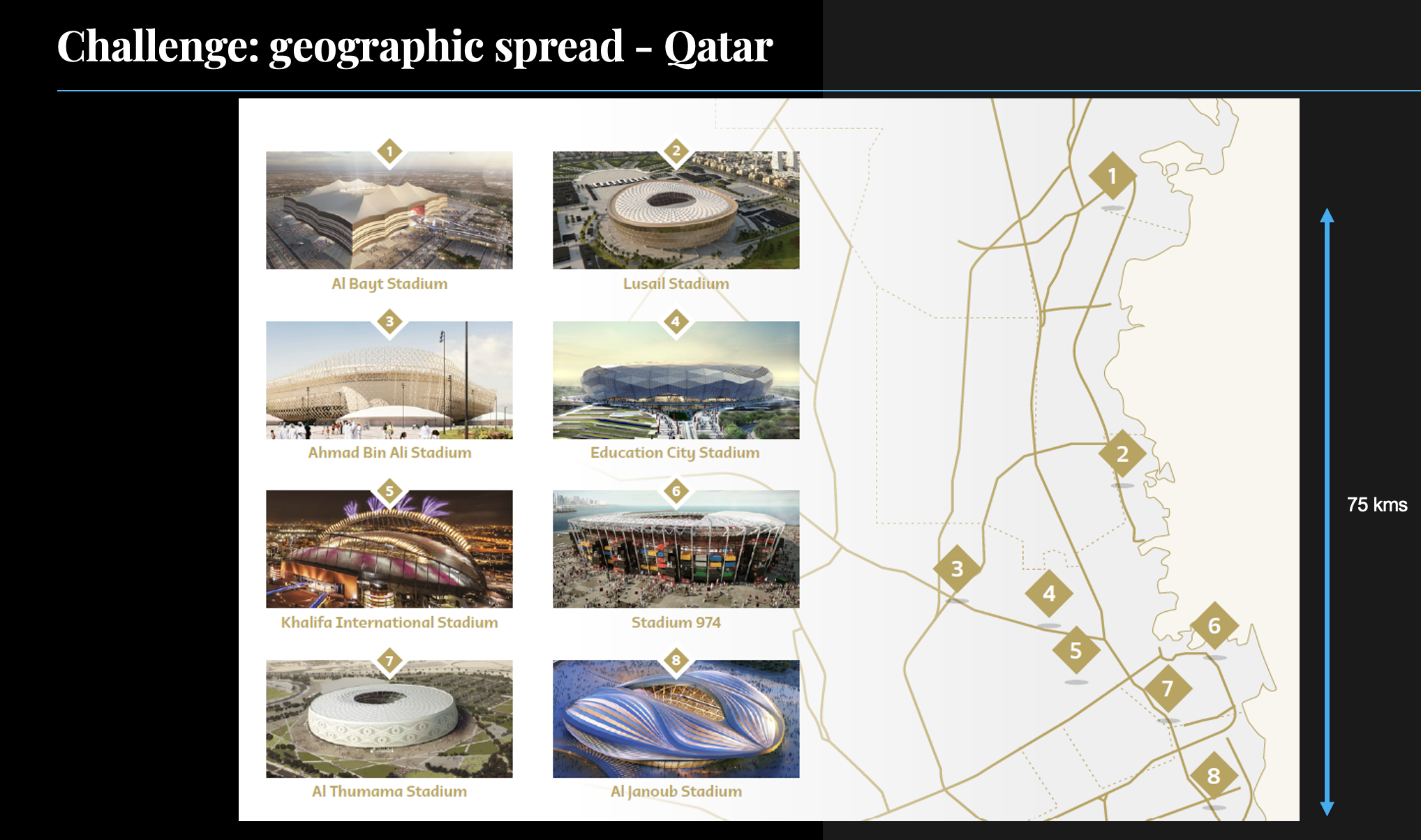
How We Help
Before MATCH Hospitality implemented PhotoShelter, Morag told us that the process of getting the images from photographers was delayed and clunky, as seen in the graphic below. She and her team had to get the best images via WeTransfer at the end of the day, with the full set sent a week later. Images were filed in SharePoint and folders, so searchability was time-consuming, while requests for images from internal and external stakeholders were handled mainly by email, adding to Morag’s already busy workload.

Now this process is simpler and faster. In addition to having a strict photography schedule and great preparation, to get the images from the camera to the various teams at MATCH Hospitality seamlessly, the team relies on the speed of PhotoShelter’s real-time workflow. All images are uploaded straight into PhotoShelter and tagged automatically using PhotoShelter AI.
In the run-up to the events, there’s also a meticulous planning process which involves setting up a folder structure in their PhotoShelter library, to allow photographers to upload images directly to the pre-arranged folders.
In the case of the FIFA World Cup™ in Qatar, Morag made the most of PhotoShelter’s storing, organisation and collaboration functionality by following these steps:
- Creating collections and galleries for each of the matches they committed to photographing.
- She then organised the collections by match number and teams and within the collections she used galleries to organise the photos by the stadium and photographer allocated.
- Setting up a consistent naming convention for photographers to use when uploading photos is key, so everyone is able to search images by photographer, match, stadium and even hospitality product.
In this clip, Morag explains how this thorough preparation process in their PhotoShelter library sets them up for success:
Record Speed Implementation and Adoption
One of the reasons for MATCH Hospitality’s successful photography workflow at the FIFA World Cup™ in Qatar was the speed of implementation and adoption. While the team of photographers was already in Qatar, Morag worked closely with PhotoShelter’s customer success and sales teams to get their site set up quickly. Their new PhotoShelter Library was implemented and adopted by 44 users in record time – 4 days, our fastest-ever implementation!
The PhotoShelter library, which currently has over 15,000 assets, is used by various teams both external and within MATCH Hospitality, including marketing, sales, culinary and event management. And unlike their tedious process before having PhotoShelter, these teams can now self-serve and find the images they need quickly without having to manually request them by email and having them sent via numerous tools and programmes.
It’s really refreshing to enable these teams to self-serve. Whereas in the past, it would always be a request coming to me. I would have to go through folders and find a picture they wanted, send it on WeTransfer and now they can just go in and get what they need.
Morag Kent, Match Hospitality
Being at The Forefront of a Fast-Moving Industry
In the sports & events hospitality industry things move fast. Companies need to innovate to stay relevant in a competitive market. By using impactful visual storytelling and PhotoShelter’s real-time workflow to help sell and promote unique sports experiences, MATCH Hospitality is at the forefront of the industry, leading the way with its impactful offering.

